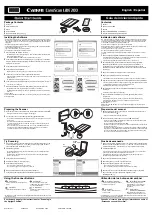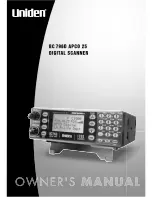
14 5 WHAT THE 2SX-SERIES SCANNER RECORDS
is no question about what data will be recorded. The disadvantage is that
sometimes there is no question that a lot of data will be recorded, most of
it unimportant. For non- power quality data such as power factor measure-
ment, there is no disadvantage. These record types include Stripcharts, Daily
Profiles, Histograms, and Energy Usage.
5.1.3 Using the Scanner
The PMI Scanner can record every available record type simultaneously. Each
record type has its own fixed memory allocation, so there is no danger of
one errant record type filling the Scanner memory to the exclusion of other
record types (for example, Event Capture can never overflow into Stripchart
memory). Thus the choice usually isn’t what to record types to record, but
what record types to examine. In order to answer that question, a good
understanding of each record type is required. The details of each record
type, and potential uses, are described in the following subsections.
5.2 Stripcharts
The Stripchart is one of the most useful record types. In a single Stripchart
graph, you can see power quality events such as single-cycle voltage sags and
current surges, as well as long term voltage trends. With the graph, an entire
recording session can be examined at a glance.
5.2.1 What’s Recorded
The only setting for the Stripchart is the Stripchart Interval. This Interval,
which can be as small as one second to as large as four hours, determines
how often the Scanner takes a Stripchart data point. Every Stripchart the
Scanner is recording uses the same Interval setting. During the Interval period,
the Scanner keeps a history of the largest and smallest one-cycle values for
each Stripchart, as well as a running average. At the end of the Interval,
the max, min, and average values for that time period are recorded as a
Stripchart data point. For example, if the Stripchart Interval is set to one
minute (a typical setting), at the end of each minute, the Voltage Stripchart
will record the average RMS voltage, the minimum one-cycle RMS voltage,
and the maximum one-cycle RMS voltage, all during that minute. All of the
3600 60Hz cycles during that minute are used to calculate the average, and
for max/min detection.
These values are presented to the user as three traces on a graph: a maxi-
mum, a minimum, and an average. The average trace roughly corresponds to















































